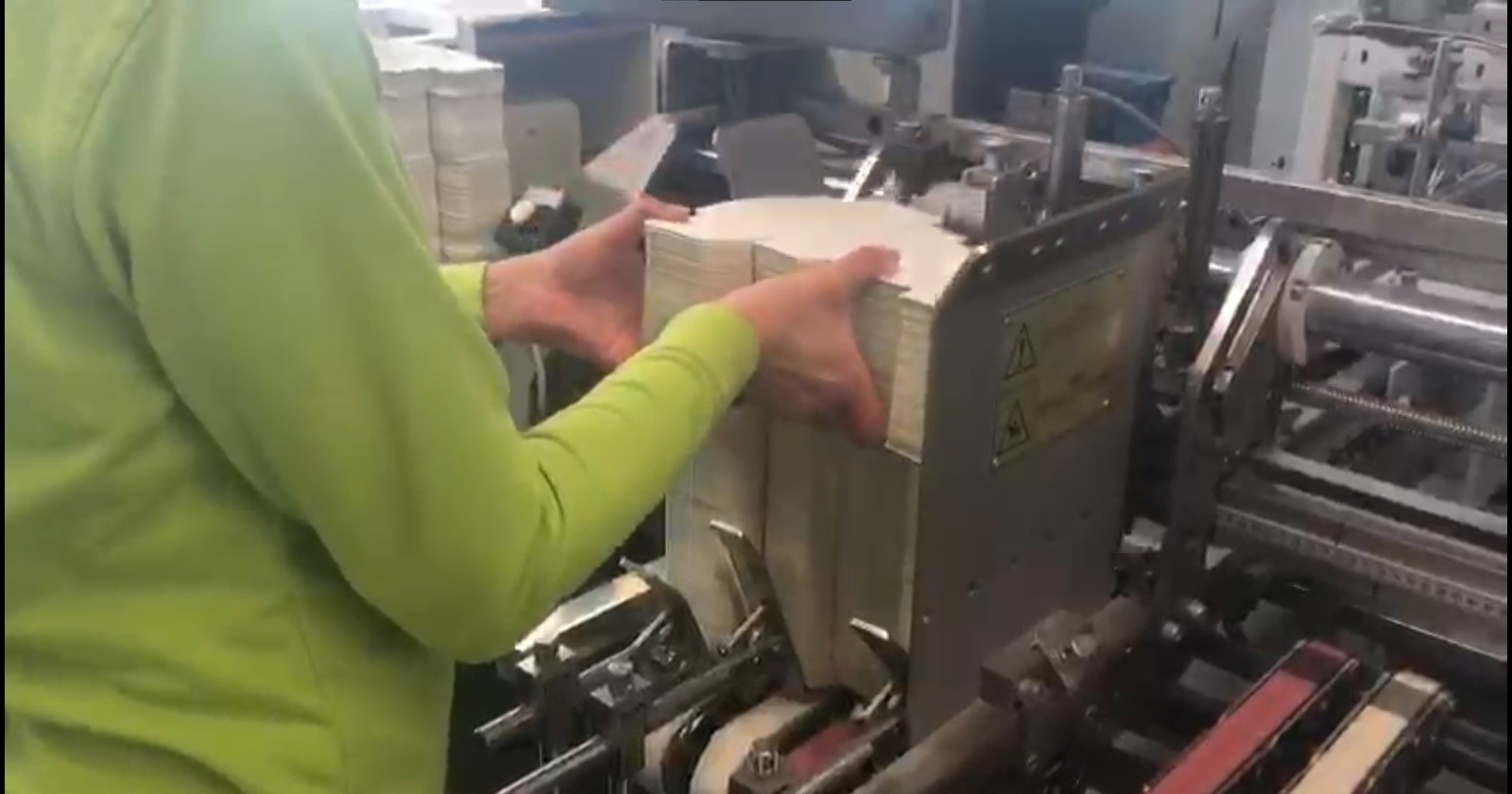The problem at hand
Background
Royal Van Eerd is a Dutch company, which produces packaging boxes for the pharmaceutical industry. The company prints, die-cuts, folds and glues carton packaging for medicines, all in-house. They are currently in the process of expanding their floor space, reorganising and updating their production lines. For this, Royal Van Eerd is looking to automate the most repetitive processes.
Procedure
Currently the company has several automated folder-gluer lines. These lines take in stacks of die-cut unfolded boxes and at the end of the line return as folded and glued boxes. This process is fully automated and can process up to 100.000 boxes an hour. The only place humans needed in this process is when the line needs to be adjusted for a new type of box and for feeding the boxes into the lines. When feeding the boxes into a line an employee grabs a small stack from a pallet, flips the stack from print facing up to print facing down and then places them into a buffer magazine at the beginning of the line. The figure below shows the process as it currently is.

The problem
The problem with the current process of employees flipping the stacks and placing them in the magazine are several. First of all the process is repetitive and dull, furthermore the flipping of the stacks can result in employees straining their wrist. For these reasons, employees are not allowed to feed boxes into the magazine for more than two hours at a time. After this time, they need to switch with one of their colleagues. Even though the company mandates this, it frequently happens that employees do not switch positions.
The solution
Box Recognition
In order to locate the stacks on the pallet machine learning is applied to create a robust and versatile algorithm. Van Eerd manufactures over a thousand different types of boxes, each different in shape and/or imprint. This amount makes conventional object recognition near impossible. The algorithm created recognizes boxes fed to the algorithm, but also never seen boxes. This reduces developing time and operating the robotic pre-feeder. The machine learned algorithm in combination with a 3D-camera makes it possible to locate and determine the orientation of boxes with different shape and imprint.
Depalletising
Once the stacks are located, the robotic arm can begin. The pick-up process is quite complex. Once the end-of-arm-tool is aligned with the stack of boxes, it applies a force at the opposing top side. Servomotors are used to lift up the closer part to relieve most of the pressure. The lowest part of boxes is lifted by pressurized air blown out of air knives. This creates a gap between the stack and paper sheet. A pneumatic piston pushes out a spoon under the stack of paper. Now, the stack is squeezed together for transport to the magazine. Halfway the stack of boxes is shortly relieved to correct the alignment. The stack is then flipped over, placed, and ready for further production steps.
Conclusion
During these past five weeks, the project group has shown that in principle it is possible to automate this process. In the time given the group managed to build an end of arm tool that is able to feed up to 36.000 boxes per hour. Simultaneously they created a machine-learning algorithm that is able to instantly adjust to new boxes.